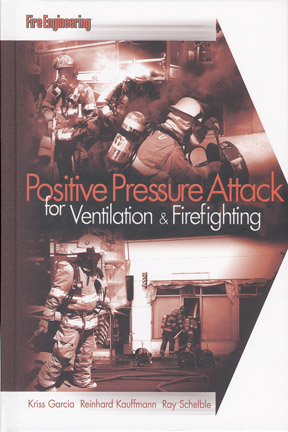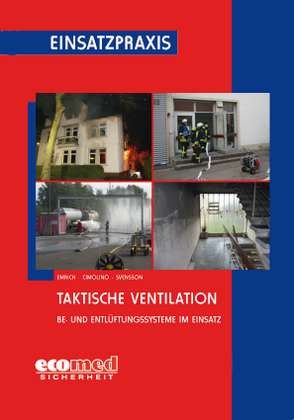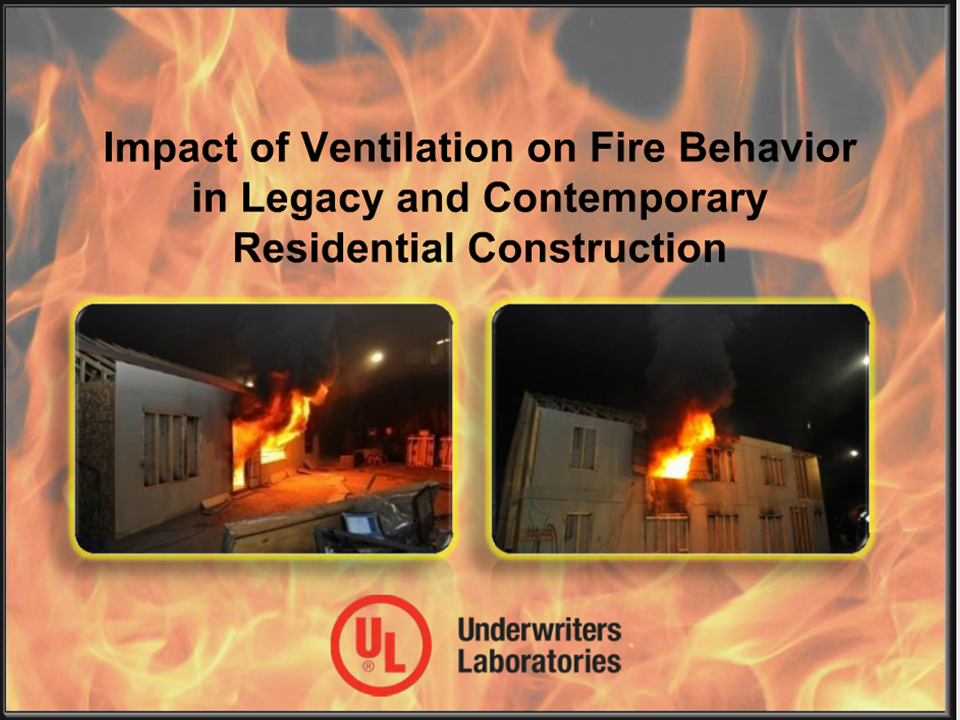In the framework of the Postgraduate studies in fire safety engineering at Ghent University Karel Lambert wrote a thesis about the use of positive pressure ventilation in staircases. In order to write the thesis a large literature study was perforemd. On the internet ample information about ventilation can be found.
This page tries to give an overview of documents worth reading. The goal is to share the results of the literature study. Different documents are divided into categories. Both texts writen by and for firefighters as scientific publications are listed. A reader that wants to broaden his knowledge about ventilation is suggested to start with the "easy" texts and read the "heavier" scientific publications later. We try to indicate the year of publishing so the reader knows how old a text is. This is because knowledge evolves througout the years. Most of the time the number of pages is mentionned as well so the reader has an idea about the efforts needed to go through the work.
Tips about additional texts, articles, ... and links that are no longer correct or questions about ventilation are always welcome via facebook (Karel Lambert).
Books
The most important work is and stays the book “Fire Ventilation” by Dr. Stefan Svensson. Ventilation is also a topic in the book "Eurofirefighter” by Paul Grimwood.
In “Positive Pressure Attack for Ventilation & Firefighting” Kriss Garcia, Reinhard Kauffmann and Ray Schelbe describe the tactik PPA. The book offers a good insight in this method.
In “Einsatzpraxis: Taktische ventilation” by Christian Emrich, Ulrich Cimolino and Stefan Svensson there is a lot of information as well. However, this is a book in German..



Ronan Vinay has written the french book "La ventilation opérationnelle". it is the most important work about ventilation for french speakers.

These books remain the best way to acquire a basic understanding about ventilation.
Articles in firefighting journals and papers for firefighters
Articles in firefighting journals and papers written for firefighters are the most suited for firefighters that want to study ventilation. These text have been written in order for fighters to gain a better insight into ventilation. This is not always the case in reports of research projects or in scientific papers. The latter are more demanding. More prior knowledge and more efforts are necessary to extract knowledge from the text. This leads to a bigger time investment. Therefore it is suggested to start with reading articles from firefighting journals.
Below there is an overview of the articles that have been published over the years:
Grimwood Paul, Tactical Ventilation, Asia Pacific Fire Magazine, December 2005
Hartin Ed, Ventilation Strategies: international best practises, 2008
This paper was written by Ed Hartin for the IFIW meeting in Sweden in 2008.
Kerber Steve, NIST goes back to school, NFPA Journal, September 2008
Garcia Kriss, The impact of negative pressure, FireRescue magazine, October 2008
Hartin Ed, series of articles about ventilation, October-November 2008 on www.cfbt-us.com
Fire Ventilation
Ventilation Tactics: Understanding and application
Hazard of Ventilation Controlled Fires
Positive Pressure Ventilation: Theory and Practice
Hartin Ed, series of articles about wind driven fires, March 2009 on www.cfbt-us.com
Wind Driven Fires
NIST Wind Driven Fires Experiments: Establishing a Baseline
NIST Wind Driven Fires Experiments: Anti-Ventilation-Wind Control Devices
NIST Wind Driven Fires Experiments: Wind Control Devices & Fire Suppression
Wind Driven Fires: Tactical problem
Emrich Christian, Blowing in the wind, Fire & Rescue magazine, August 2009
Kerber Steve & Madrzykowski Daniel, Go with the flow, FireRescue magazine, November 2009
Lambert Karel, Wind Driven Fires, De brandweerman, September 2010
Lambert Karel, New insights into ventilation, De brandweerman, May 2011
Hartin Ed, series of articles: Influence of ventilation in residential structures: Tactical implications Part 1-8, February 2011-Januari 2012 on www.cfbt-us.com
Lambert Karel, interior firefighting: Command & Tactics, De Brandweerman, March 2012
Hartin Ed, Wind driven fires, January 2012 op www.cfbt-us.com
Lambert Karel, Configuring power blowers, De Brandweerman, juni 2012
E-learning
There are a number of websites where one can follow classes about ventilation in an e-learning format.
The best program is without any doubt the program by Steve Kerber at UL university:

There is a program at the university of Texas as well.
Research by NIST
NIST has performed a tremendous amount of research in the past years into the use of positive pressure ventilation. These research projects have a scientific basis. A lot of the current knowledge about ventilation has been discovered in thsese projects. However, for most firefighters it will be hard to study all the information available.
The research reports and videos of the following research projects can be found on www.nist.gov/fire/ppv.cfm:
NISTIR 7065, Characterizing positive pressure ventilation using computational fluid dynamics bySteve Kerber andWilliam Walton (February 2003, 35 pages). This document is about the modelling of a fan in a CFD package. A video that shows the CFD calculation can also be found on the website.
NISTIR 7213, Effect of positive pressure ventilation on a room fire by Steve Kerber andWilliam Walton (March 2005, 55 pages). In this study full-scale experiments have been performed to see what is the effect of natural and positive pressure ventilation on a fire. Two videos about the experiments, natural and positive pressure ventilation, can be found on the website.
NISTIR 7315, Evaluation of the Ability of Fire Dynamic Simulator to Simulate Positive Pressure Ventilation in the Laboratory and Practical Scenarios by Steve Kerber (April 2006, 151 pages). This study is about using CFD modelling. The goal of the study was to predict the fire behaviour during ventilation.
NISTIR 7342, Full-Scale Evaluation of Positive Pressure Ventilation In a Fire Fighter Training Building by Steve Kerber en William Walton (July 2006, 92 pages). This research project is about the effects of the different flowpaths that can be used to vent a fire in a compartment prior to extinguishment. A video is available as well.
NISTIR 7412, Evaluating Positive Pressure Ventilation In Large Structures: High-Rise Pressure Experiments by Steve Kerber, Dan Madrzykowski and Daniel Stroup (March 2007, 73 pages). In this study, several configurations of fans are evaluated in a high-rise building. The decreasing effectiveness in function of the increasing floors is studied.
NISTIR 7468, Evaluating Positive Pressure Ventilation In Large Structures: High-Rise Fire Experiments by Steve Kerber and Dan Madrzykowski (November 2007, 140 pages). In this study, the research of the previous study is continued. Real fires have been used in a high-rise building for this study.
NIST Technical Note 1498, Evaluating Positive Pressure Ventilation In Large Structures: School Pressure and Fire Experiments by Steve Kerber and Dan Madrzykowski (July 2008, 363 pages). For this series of tests, experiments have been performed in a school. Full scale fires have been used.

Scientific papers
In the academic world a number of scientific publications that report research are available. A limited amount of papers about ventilation is available.
These papers are subject to copyright. A number of them can be found on the internet free of charge. Others can only purchased online. Hint: most universities have a subscription to those journals. Through the university library most of the papers below can be found. People who really need a certain paper can contact This email address is being protected from spambots. You need JavaScript enabled to view it..
Ziesler, Gunnerson & Williams, Advances in positive pressure ventilation: Live fire tests and laboratory simulation, Fire technology, vol 30, p 269-277, 1994
Svensson Stefan, Experimental study of fire ventilation during fire fighting operations, Fire technology 37, 69-85, 2001
Ingnason Haukur & Fallberg Ronny, Positive Pressure Ventilation in Single Medium-Sized Premises, Fire Technology, 38, 213-230, 2002
Ezekoye et al., Effects of PPV Attack on Thermal Conditions in a Compartment Downstream of a Fire, Fire Technology, 41, 193-208, 2005
Weinshenk et al., Modeling fan-driven flows for firefighting tactics using simple analytical models and CFD, Journal of fire protection engineering, 21 (2), p 85-114, 2011
Lambert K, Merci B, Experimental study on the use of positive pressure ventilation for fire service interventions in buildings with staircases, Fire technology, Vol 50, Issue 6, 1517-1534, 2014
Research
Lots of research into the use and implementation of ventilation is performed. On the internet several text can be found about this topic. However, the text have a variable quality. One has to read them from the point of view of the author. A European scientists will write down other things than an American lieutenant taht is writing a piece about PPV in his fire department.
A chronological survey of the texts that can be found is avalaible below:
Tuomisaari Maarit, Smoke ventilation in operational firefighting, 1997 (54 pages)
Thomas Martin, The use of positive pressure ventilation in firefighting operations, 2000 (17 pages)
Stott Richard, Report on PPV Trials at Oxford Road, Preston, UK, 2000 (47 pages)
Yates Mark, The wind of change, Brigade command dissertation, Fire service college, 2002 (130 pages)


